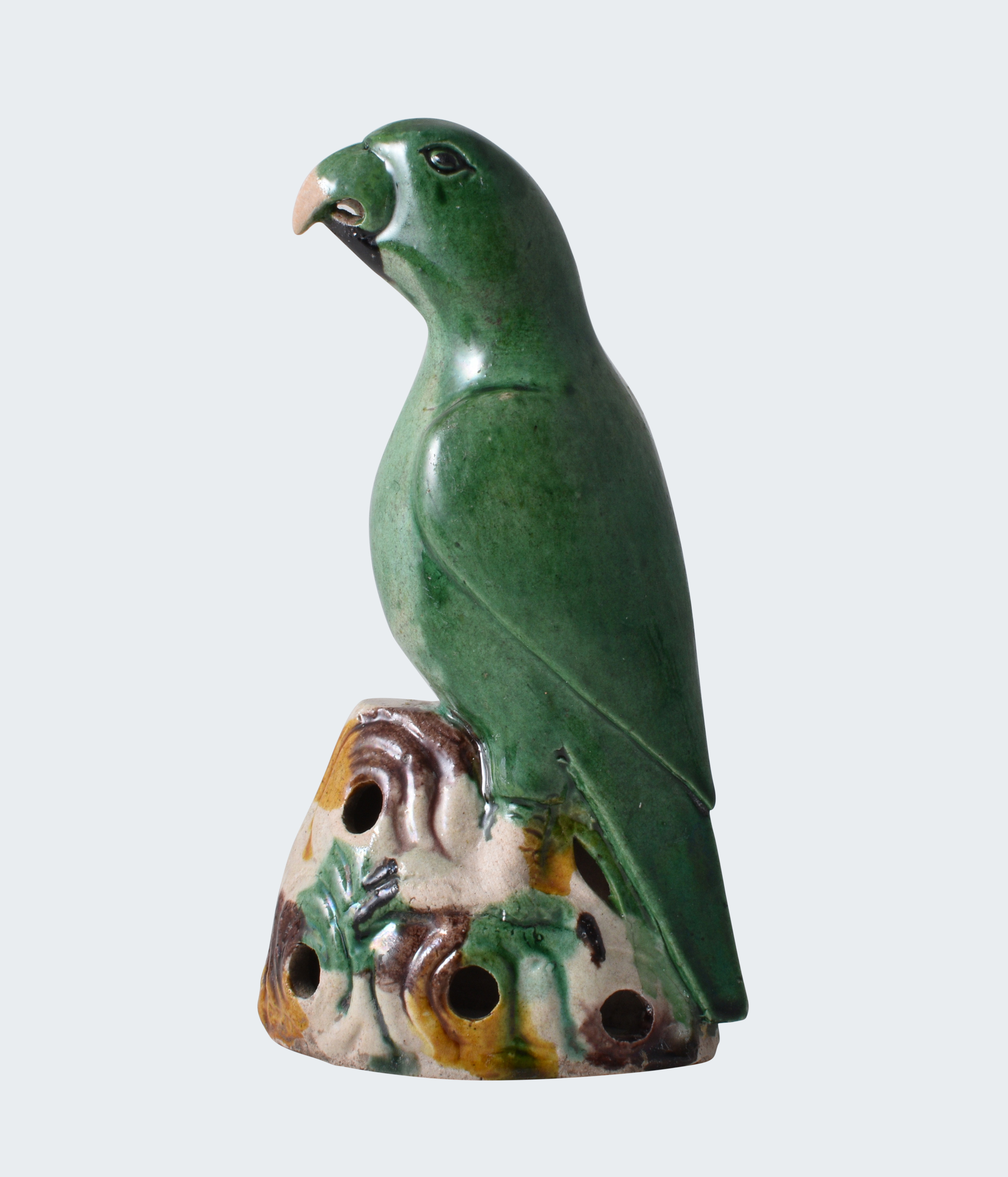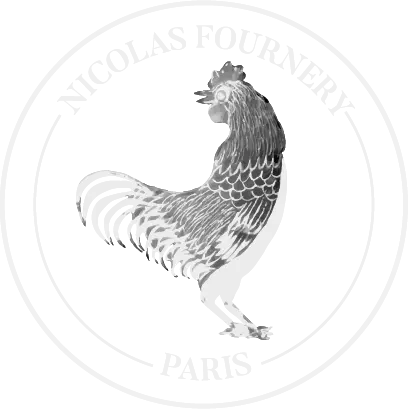Naturalistically moulded in two halves, perched on a pierced rock work base and with folded wings. Its head is turned slightly to the right and the beak is open. The body is decorated with two shades of green enamel and the eyes are pencilled in black, while the claws and beak are left in the biscuit. Traces of vermillon can be seen of the beak. The hollow rockwork base is painted in the “egg-and-spinach” pattern.

